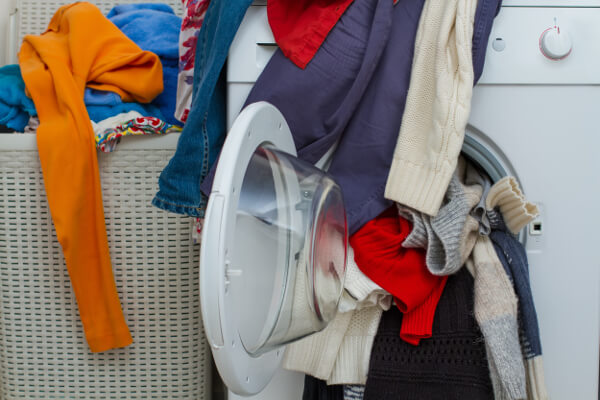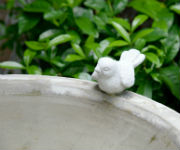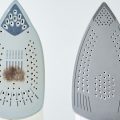
Source: Shutterstock / Author: Evgeny Atamanenko
Whenever you browse the laundry detergent aisle at the supermarket or see an advert on television, you are probably inundated by a choice of brands, as well as by a decision between biological or non-biological products.
Like so many people, for a long time, we paid no attention to the difference and opted to buy whichever detergent caught our attention the most or one that we were already familiar with. Recently, however, our curiosity got the better of us and so we asked: “what is the difference between bio and non-bio detergent?”. The answer was deceptively simple – biological detergents contain naturally-occurring enzymes whereas the non-bio alternatives do not.
You may be asking yourself “why on Earth would they put enzymes in my laundry detergent?” or “what are enzymes in the first place?”. Well, worry not, in this article we aim to explain what they are and why enzymes are added to laundry detergents.
Table of Contents
What are enzymes in laundry detergent?
The human body produces many different types of enzymes, each with their own specific function. They help us digest food and aid the chemical process of converting digested food into energy.
The two most common enzymes found in laundry detergents are of the digestive variety. They are called lipase and protease. These two ingredients are great for stain removal at low temperatures because they are incredibly sensitive to temperature. If the temperature used is too high, the enzymes are broken apart before even getting the chance to showcase their stain-removing magnificence.
The ability to do your laundry on a cold water setting can save you money on household energy bills and you don’t have to wash different-coloured clothing separately as there is no chance of the colours running.
How do enzymes work in laundry detergent?

Source: Shutterstock / Author: margostock
Now that we know what enzymes are, as well as which enzymes are present in washing powder, it is time to find out how enzymes in laundry detergent work.
As mentioned above, both lipase and protease are digestive enzymes. They help to break down food so that we can absorb the nutrients within. As specialists in their fields, each one has a specific role to play in stain removal. Lipases are responsible for breaking down oils and fats whereas proteases break down protein and starch, such as blood and gravy. This combination allows for the enzyme detergent to work more effectively and to clean the deepest parts of the fabric’s structure.
Why are enzymes used in biological washing powder?
Enzymes are great cleaners for a vast variety of stains, but they are experts in removing protein stains. What makes them even more compelling is that they do the work even in low-temperature water.
This especially helps with delicate clothes like wool and silk. Lower temperatures also do a great job for dyed clothing like denim as this reduces colour transference.
Difference between bio and non-bio detergent
We touched on this briefly above. The difference between bio and non-bio detergents is that one contains natural enzymes (bio) and one does not (non-bio). Now, you may be wondering why both options exist if bio detergents are so great and can save you some money.
Although our bodies naturally produce both of the enzymes, they can cause skin irritations for those with sensitive skin, such as young children and babies. In some cases, this can even develop into an allergic reaction of varying severity.
How to make a bio detergent
The wondrous cleaning properties of enzymes do not stop at removing stains from laundry and you don’t have to let the washing machine flood your home to use these enzymes for cleaning. We will show you how to easily make an inexpensive, natural, and non-toxic enzyme-powered cleaner at home with ingredients which most of us have in our kitchens.
Keep in mind that this is a slow process which can take from two weeks up to three months. So, patience is a key component of this creation.
You will need:
- 100g of brown sugar;
- 1 teaspoon of yeast (this is optional, but will speed up the process);
- 300g of Lemon and/or Lime peels (you can replace the lime with an orange if you prefer);
- 1 litre of water;
- A 2-litre plastic bottle;
- A marker pen.
Once you have prepared everything, follow the steps below:
- Pour all of the brown sugar into the 2-litre bottle.
- Cut the peelings into pieces small enough to fit through the top of the bottle.
- Add the cut peelings to the 2-litre bottle.
- Add the yeast. This will cut down the fermentation process from three months to two weeks.
- Pour 1 litre of water into the bottle and screw the cap on tightly.
- Shake the bottle for around 30 seconds or until the sugar has dissolved.
- Write the current date on the bottle with the marker pen so that you can keep track of when it will be ready.
- Shake the bottle once a day for the first two weeks.
- Keep the cap loosened (except when shaking) to allow gas created by the fermentation process to escape. If you don’t, the bottle may explode and cover every available surface with partially-fermented cleaning juice.
When the concoction is ready, simply strain the liquid to remove the peelings and re-seal in a plastic bottle. When you are ready, dilute some of the mixtures in water and be prepared to experience the cleaning power of enzymes.
Where to use enzyme cleaners?
Now that your enzyme cleaner is ready, it is time to tackle some housework. But what are the household uses for enzymes?
You may be wondering what this homemade cleaner is safe to be used on. You will be pleasantly surprised to learn the wide variety of uses for this enzyme cleaner. Some recommended uses are:
- For cleaning the bathroom and toilet. Bathroom dirt and grime stand no chance against this cleaner. Mix 1 part enzyme mixture (undiluted) with 10 parts water.
- Cleaning drains and blocked pipes. Use undiluted.
- Cleaning floors. Watch as the dirt vanishes and then revel in the citrus scent. Use 1 part enzyme mixture (undiluted) with 20 parts water.
- For laundry and dishes. Use around a quarter of a cup. For laundry, add it directly to the drum and, for dishes, simply add water as usual.
- Cleaning fruit and vegetables. As this mixture does not contain any chemicals, you can safely wash fruits and vegetables with it. Mix 1 part enzyme mixture (undiluted) with 10 parts water.
- As plant fertiliser. Believe it or not, this mixture can be used as plant food. Mix 1 part enzyme mixture (undiluted) with 20 parts water. Or, if you used the mixture for mopping beforehand, simply use the leftover water.
- Repel annoying insects. All sorts of insects and other creepy crawlies detest citrus. Spray some of the undiluted mixture around to keep these pests at bay.
- Washing your car. The cleaning properties of this mixture are so good your car will look brand new (almost) after being cleaned with it. Mix 1 part enzyme mixture with 20 parts water.
So there we have it, biological detergents contain enzymes which aid in stain removal and non-bio’s do not. Now, the next time you are in the detergent aisle, or when someone asks you to explain the difference between bio and non-bio, you can hold your head high with confidence and either explain or point them to this article.
Need a cleaner?
Enter your postcode to view our rates and availability in your area.
For questions about the services we offer visit our main site or you can always call us at 020 3404 0145
Did we miss anything? Did you try making the enzyme cleaner? Let us know in the comments below or give us a shout on social media!









The secret to keeping a clean house is doing the task on a daily basis. Scheduling and repeating it will guarantee that it will be always be free of dirt and trash.
How many minutes does it take for enzymes in clothes washing detergent to be effective on a cool wash?